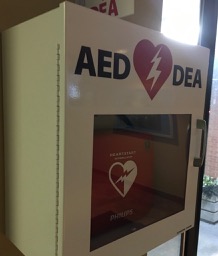Updated: February 2023
On-Call Service
(877) 858-1110 Ext 4 after 5pm on weekdays, plus weekends & holidays
Emergency – Call 911
Fire, medical emergency or a crime in progress
Police Non-Emergency – 416-808-2222
24 hour service.
Suicide crisis helpline – Call 9-8-8
24 hour service
Toronto Community Crisis Service (TCCS) – Call 211 or 911
Dispatches trained teams of multidisciplinary crisis workers to respond to people experiencing a mental health crisis. It is a community-based, non-police response to mental health crisis calls and well-being checks.
Our mid-rise address is 133 Wilton near Jarvis and the Esplanade.
Fire
Remember, most people die from the smoke, not the fire. Here is what to do.
If there is a fire in your mid-rise unit:
- Tell everyone in your unit to leave.
- Close, but don’t lock, all doors behind you.
- Pull the fire alarm on your floor and yell “fire”.
- Leave the building using the nearest exit stairway.
- Do not use the elevator.
- Call the fire department at 9-1-1 from a safe location. Never assume this has been done.
- Meet the firefighters when they arrive and tell them where the fire is.
If you are in the mid-rise, but there is no fire or smoke in your unit:
When you hear the Fire Alarm, to go or stay?
Most of the time, the best thing to do in a fire is to leave the building as soon as possible. But in some cases, you may not be able to leave and you may have to stay in your unit. In either case, you must act quickly as seconds count.
The longer you wait, the more risk there is that heavy smoke will have spread into stairways and corridors and your chances of survival are less. No matter what your decision, you must protect yourself from the smoke.
- Call 911 to report the fire. Report any smoke or flames you see and say you are staying in your apartment at 133 Wilton Street and give your unit number.
- Pull the fire alarm in the hallway and yell fire, if it is not ringing already – this notifies your neighbours and the monitoring company.
- Keep your door shut. If you may need help later, don’t lock it.
- You must protect yourself from smoke. Stay in your unit until you are rescued or until you are told to leave.
- Keep smoke from entering your unit. Use duct tape to seal cracks around the door and place wet towels at the bottom. Seal vents or air ducts the same way.
If smoke enters your unit: - Call the fire department at 9-1-1 and tell them where you are and then move to the balcony or sunroom. Close the doors behind you.
- Go to the most smoke-free room or your balcony, close the door and seal it with tape and towels. If necessary, open the window for fresh air.
- Show emergency personnel where you are by hanging a sheet from the window or balcony.
- Keep low to the floor where the air is cleaner.
- Stay awake and listen for instructions from authorities.
If you wish to leave your unit:
- If you want to leave your unit, leave right away. Time is important.
- If there is no smoke or heat, brace yourself against the door and open it slowly.
- If you see smoke or feel heat, close the door quickly and protect yourself.
- If the corridor is clear, take your keys, close the door behind you and go to the nearest exit stairway.
- Take essentials with you – ID, medications, money.
- Pull the fire alarm in the hall if it is not already ringing.
- Leave the building using the nearest exit stairway.
- Do not use the elevator.
- If you encounter smoke in the stairway, use the other stairs.
- Call the fire department at 911 from a safe location.
- Meet in the park across Wilton Street.
- Meet firefighters when they arrive and tell them where the fire is.
In townhouses, always leave your unit.
Call 911.
More information:
The Ontario Building Code defines “high-rise buildings” as those being seven storeys or more in height.
High Rise Fire Safety – City of Toronto
Fire safety Information in different languages – including Spanish, Chinese, French, Tagalog, and more.
Sudden Cardiac Arrest

There is an external automated defibrillator on the ground floor lobby in a box beside the elevator.
This is a portable device that checks the heart rhythm and can send an electric shock to the heart to try to restore a normal rhythm.
- Call 911 or have someone else do it. The midrise building is at 133 Wilton Street near Jarvis and the Esplanade.
- Send someone for the defibrillator.
- Take it out of the box and turn it on.
- The machine will talk to you. Follow instructions that the machine will give you.
- Keep going until paramedics arrive and take over.
Other services:
City of Toronto Services – Call 311
Woodsworth On-Call – (877) 858-1110 Ext 4
Property emergencies and lock-outs – evenings and weekends) –
For information about power outages and more, see
A-Z Handbook for Co-op Members
In Case of Emergency Info Sheet
Click to download and print a sheet for emergency responders.

